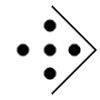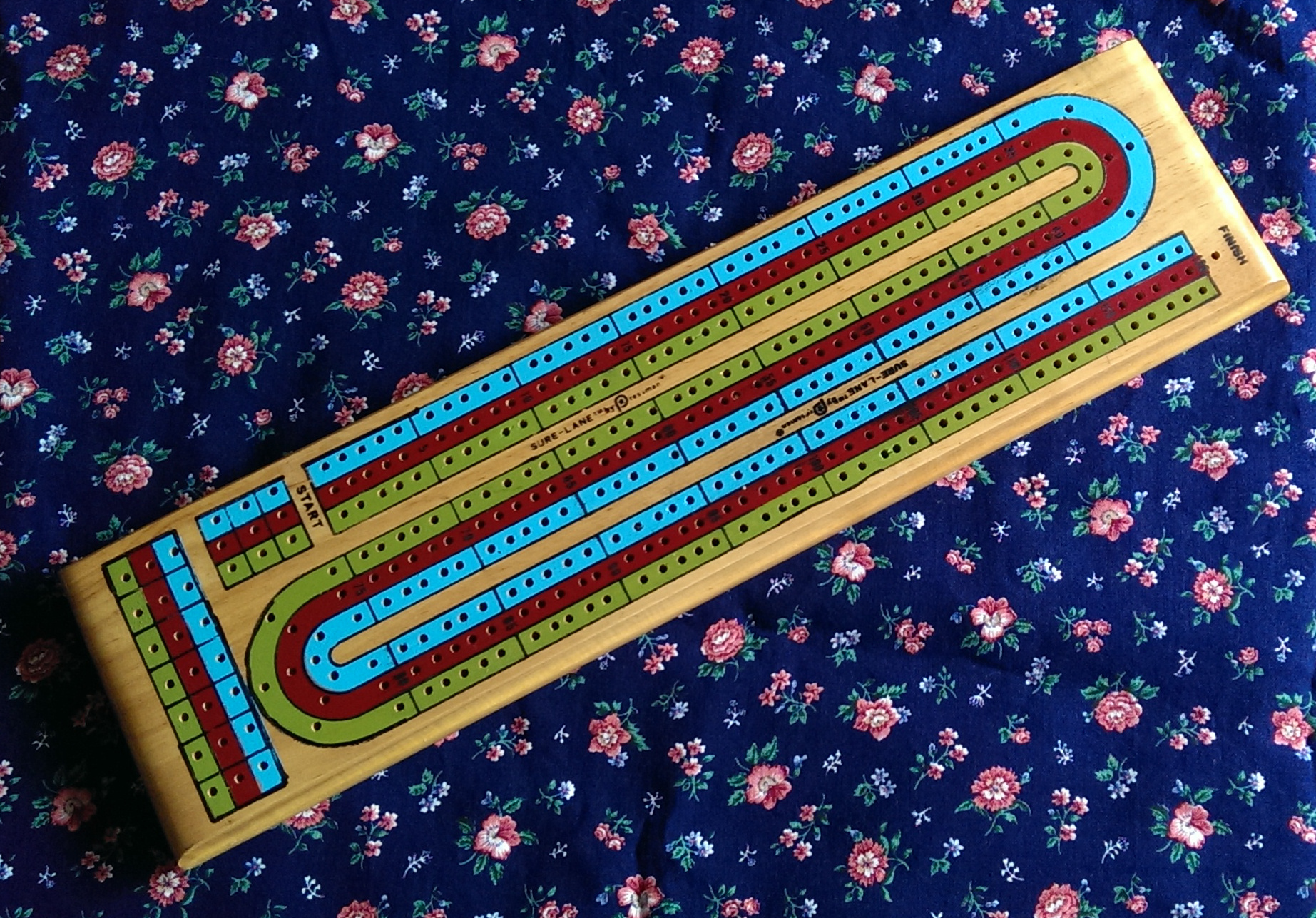
One of the difficulties with talking about the origins of games is that (especially with the oldest games), their origins are obscure and theories are contradictory. It's often difficult to tell exactly where a game was first played and even more difficult to say who invented it. Cribbage is a little different. In this case, we do have the name of an inventor, although whether he really developed it by himself or just helped to establish it in its current form is uncertain.
The person credited with the invention of Cribbage was Sir John Suckling (1609-1642), an English soldier, courtier, poet, and playwright (Parlett, The Penguin Book 423). A colorful character, during his relatively short life, he developed a reputation as a gamester, a master at cards and bowling. According to John Aubrey's Brief Lives, written in the 17th century, Suckling had a habit of playing cards with himself to refine his technique and further guaranteed his success by cheating. He made his own decks of marked cards and sent them to all the places where he played so that he always knew what his opponents were holding in their hands. He made a considerable amount of money with his gambling. But, although he is often credited with the invention of Cribbage, he might have actually just codified the rules for a game that others were already starting to play (Grunfeld 118).
What is more certain is that Cribbage is descended from an earlier game played in the 16th century, Noddy. Cribbage became a popular game with the British aristocracy during the 17th and 18th centuries, becoming the national card game of Britain (Parlett, The Penguin Book 423). English colonists brought the game of Cribbage with them when they settled in America, and it has been a popular card game there ever since, especially in New England (Grunfeld 118). In Colonial New England, Cribbage became a tavern game associated with the lower classes because it was simpler to learn than other card games and fairly quick to play. The fact that it requires basic mathematical skills and the ability to do addition fast made it a little more respectable. In fact, Hoyle thought that the game of Cribbage was good for children because it would help them to learn arithmetic. As long as the tavern players weren't playing for money, Cribbage was allowable under New England's antigaming laws (Daniels 180).
Below, I explain how to play Cribbage with a physical card deck, but if you would like to try this game online for free, I recommend the version at solitaired.com. The game page also explains the rules of the game, playing strategy, and some of the cognitive benefits of playing Cribbage.
Cribbage
The rules for this game come from The Penguin Book of Card Games by David Parlett, pp. 423-427, with further information from Games of the World by Frederic V. Grunfeld, pp. 118-120, and The Way to Play by the Diagram Group, pp. 112-113. The game of Cribbage used to be played with five cards in a hand, but the newer version which is popular today is played with a hand of six cards. The advantage of the newer version is that the game moves much faster. I will discuss both versions here, starting with the six-card version.
Players: 2
Object: To get to 121 points before your opponent (no matter how many deals it takes).
The Deck: An ordinary 52 card deck (no jokers).
Other Equipment: Cribbage board or pencil and paper for keeping score.
The Cribbage Board: The Cribbage board is used for keeping score with pegs to mark the players' points. The design of the board can vary, but it typically has two sets of 60 holes, one set for each player. There is one more hole at each end of the sets of 60. There are two pegs for each player. When recording points, a player puts a peg in the new total while leaving the other peg in the old total. It helps players to be more accurate in their calculations because they not only know where they are in their total but can remember how they got there.
Usually, I prefer to talk about games that don't require special equipment, but I made an exception in this case because, if you can't get hold of a Cribbage board, you can always keep score on paper. The advantage of the board is that it makes score-keeping much easier (Diagram Group 112).
The Deal: The two players cut cards to decide who gets to be the dealer. In Cribbage, the player who gets the lower card becomes the dealer. The dealer deals a hand of six cards to each player, one at a time, starting with his opponent.
Discarding: Both of the players discard two cards of their choice from their hands, face-down on the table, bringing them each down to a hand of four. The four discarded cards form the crib, which now belongs to the dealer. The two players use the cards remaining in their hands to form combinations (see below) that will give them points. The dealer will get to add the point value of any combination made by the crib cards to his own score (but he doesn't look at the crib cards at this point in the game). Study the possible combinations listed at the bottom of the page to decide which cards you want to discard and which ones you want to keep from the six that you are dealt to make the best possible combinations for yourself.
The Starter: After both players have discarded cards, the non-dealing player cuts the deck in half, and the dealer turns over the top card from the bottom half of the deck. He places this card on top of the deck as the starter. (Note: If the starter happens to be a Jack, the dealer get 2 points immediately (these bonus points are called "For his heels"). However, he has to claim the points before anyone plays any cards or he doesn't get to count it. If you're the dealer, remember to pay attention and look for a Jack!) The starter (ironically) is important later in the game, but for now, you have to consider the order in which you want to play the cards in your hand.
As you start to play from this point, you will want to keep the values of the cards in mind. You will be totaling the value of the cards you play as you go along. There is more information about this in the Combinations section (and I recommend taking a moment to study them before you begin playing), but this will help you to get started and to determine the order in which you should lay down cards:
Values of Cards: The number cards have their face value. The other cards are worth:
- Ace = 1 (it is the lowest card in the game)
- Jack, Queen, and King = 10
Ranking Order: In sequence from lowest to highest, the cards rank as follows: A, 2, 3, 4, 5, 6, 7, 8, 9, 10, J, Q, K.
Playing: Both players, beginning with the non-dealer, take turns laying one of their cards on the table, face-up. As they do so, they state the total value of all the cards in front of them. You have to do this strategically, because there are certain totals that you are aiming for, and the order in which you lay down your cards can help you earn extra points. However, watch your point totals because there is an upper limit. You want to stay below 31 points.
You as lay down cards, if you can reach the following total values, you will earn bonus points:
- If a player lays down a card that brings the total to exactly 15, that player receives 2 points.
- If a player lays down a card that brings the total to exactly 31, the player also receives 2 points.
You can also earn additional points for cards that you lay down in succession with the other player while playing:
- If a player lays down a card of the same rank as the one the other person played just before it, that player receives 2 points for making a Pair. If the other player immediately lays down another card of the same rank, that player receives 6 points. Laying down the fourth card in a row of the same rank earns a player 12 points.
- If a player lays down a card that can be used with at least the last two cards played to make a Run of three or more in order of rank, the player receives 1 point for each card in the Run. It's important to note that the cards in the Run have to be able to make a Run in sequence, but they don't have to be laid down exactly in order. (For example, if John played a 3, and Sally played a 5, then John could lay down a 4 and score 3 points for creating a Run, even though the 4 technically belongs between the 3 and 5. After he does that, Sally could play a 2 or a 6 and get 4 points for adding another card to the Run. On the other hand, if Sally plays another 4, she would just get the two points for making a Pair because the Run is now broken. There cannot be two of the same card in a Run.)
As they lay down cards, the players are not supposed to go beyond a total value of 31. As long as the total is under 31, they continue laying down cards. If one of the players cannot play another card without going over 31, he says, "Go." If the other player can still play cards without going over 31, he lays down as many as he can until he cannot lay down another without making the total more than 31. This player recieves 1 point if the total is less than 31 in the end or 2 points if it is exactly 31.
If either or both of the players are still holding any cards, they turn the cards they've played face down (keep each player's cards separate from the other's) and start taking turns laying down a new set of cards face up, just as they did before, until they get to 31 (or as close as they can get) again. They keep doing this until they are completely out of cards. If one person is out of cards while the the other still has some, the player who still has cards continues to play alone until he is out of cards also.
Showing Hands: Both players pick up the cards they've played and assemble their hand of four cards again. First, the non-dealer shows his full hand and uses the starter card along with it (for a total of five cards) to create one or more of the combinations listed below to score more points. Then, the dealer does the same. Each player counts all combinations he or she can make with their cards, reusing cards as necessary, and scores points for all of them. If one player has the Jack whose suit matches the starter card's suit, that player earns 1 extra point. (They call this bonus "For his nob." This situation doesn't come up if the starter card is a Jack, as described under The Starter.)
Crib Points: After the two players score the points for their hands, the dealer turns over the crib cards and scores points for the combinations that he can make with them and the starter, just as he did with the cards in his hand. Unlike the hand cards, however, a flush needs to include all five cards in order to count.
Winning: When one player reaches 121 points, which is called "pegging out," the game ends immediately, even if the players haven't completed all phases of the game, and the player who reached 121 points wins. If the other player's score is under 91 points, the player is considered "lurched" (a.k.a. "in the lurch" or "skunked") "and loses a double stake."
Muggins: This is an optional rule, but some people like to say that if a player could have scored points for something and didn't notice, his opponent can point out what he missed and claim those points for himself.
Combinations
Values of Cards: The number cards have their face value. The other cards are worth:
- Ace = 1 (it is the lowest card in the game)
- Jack, Queen, and King = 10
Ranking Order: In sequence from lowest to highest, the cards rank as follows: A,2,3,4,5,6,7,8,9,10,J,Q,K.
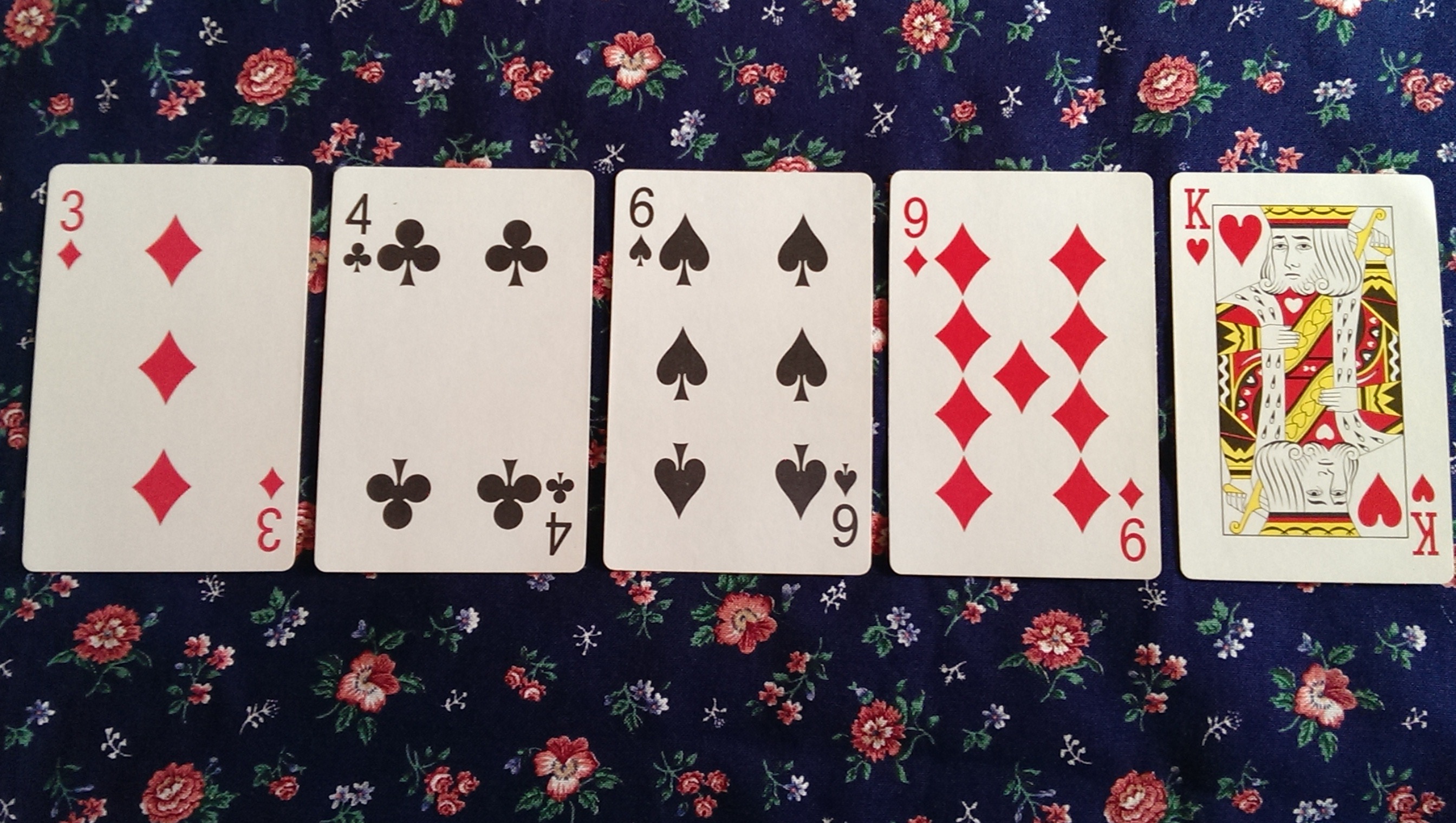
Fifteen: Worth 2 points. Consists of at least two cards whose values total 15. (Ex. A five and a King in one hand would count as a Fifteen. So would a hand of A-2-4-8. In the picture, the nine and six would equal Fifteen.)
Pair: Worth 2 points. Two of the same type of card.
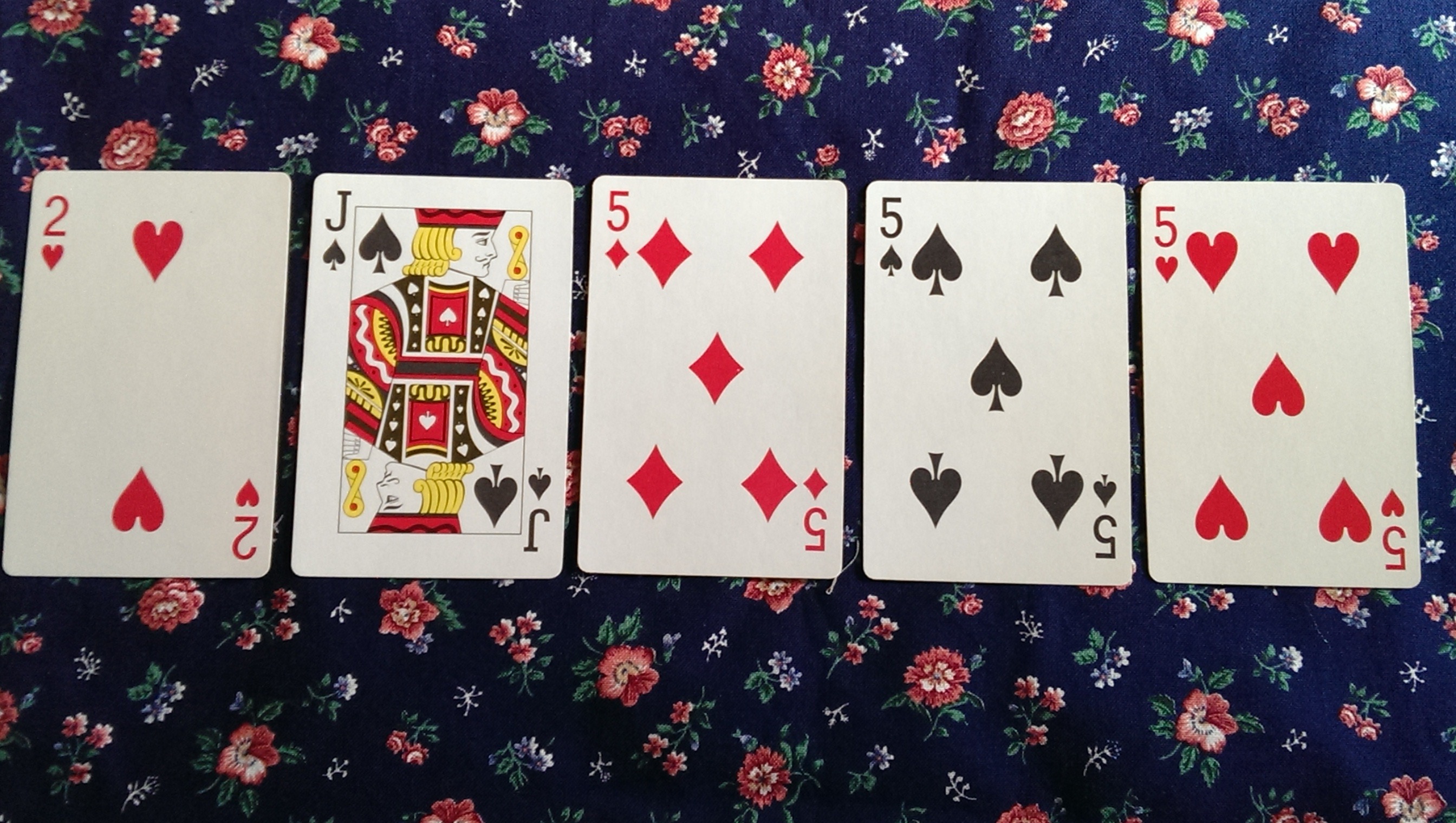
Prial (Pair Royal): Worth 6 points. Three of the same type of card.
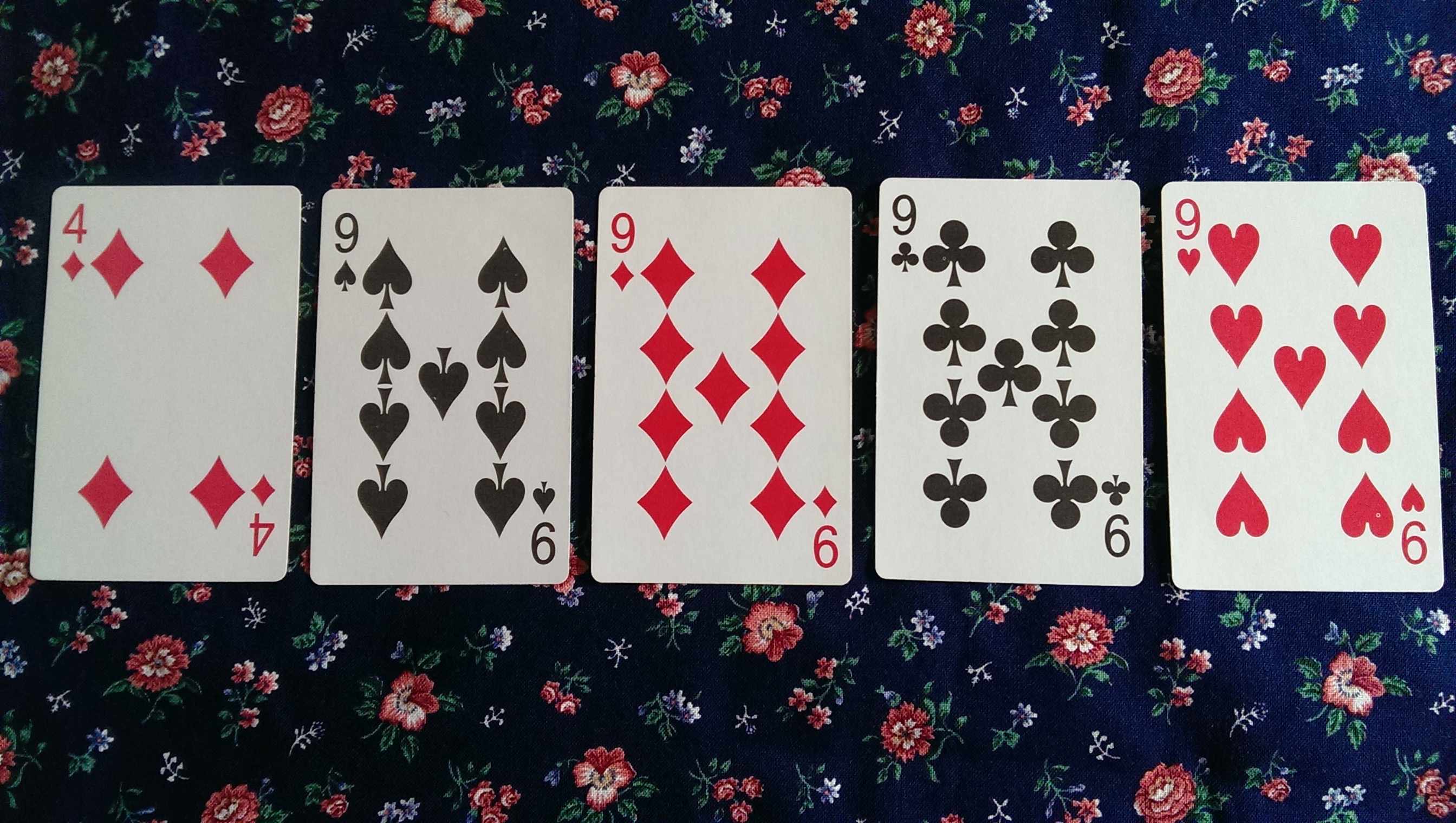
Double Pair Royal: Worth 12 points. Four of the same type of card.
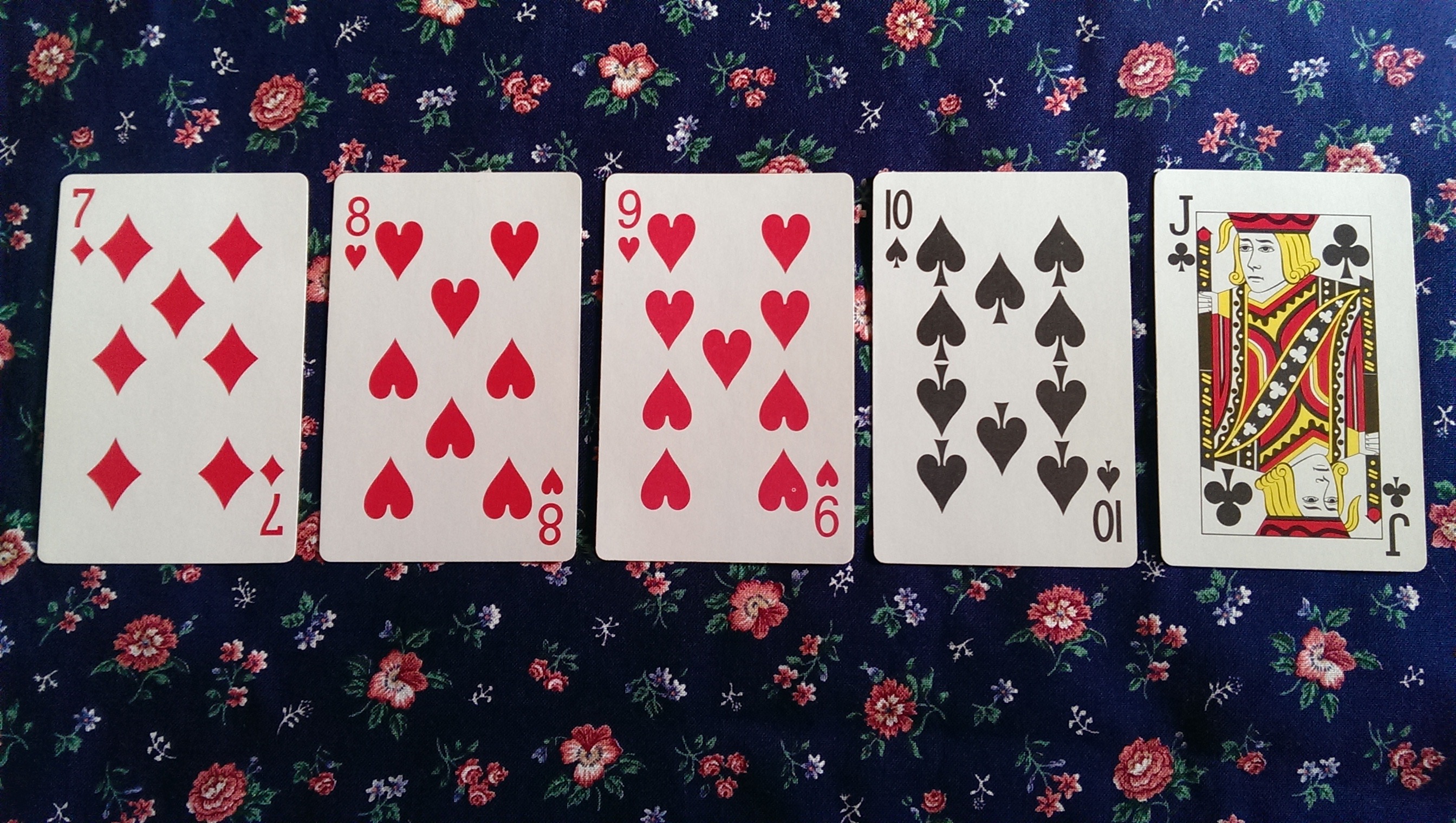
Run: Worth 1 point for each card in the hand that applies. Three or four cards in sequence. (Ex. A hand of 4-5-6-10 would count as a run worth 3 points. A hand of 8-9-10-J would count as a run worth 4 points.)
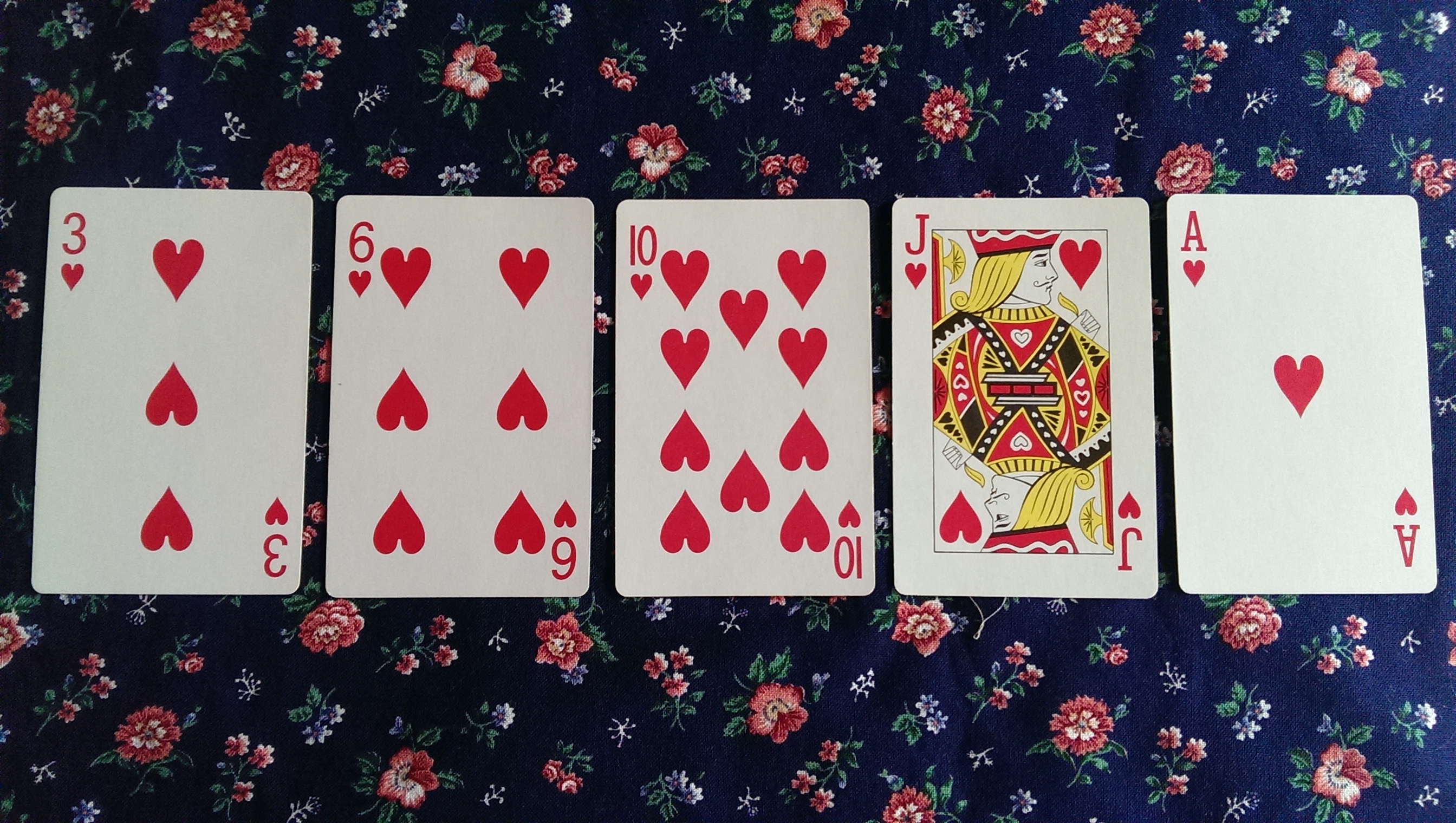
Flush: Worth 4 or 5 points, depending on whether or not it includes the starter card (4 points without the starter card and 5 points with). Four cards of any rank with the same suit.
Five-Card Crib
Originally, Cribbage players were dealt five cards instead of six. This version of the game is the one that is used in tournaments and English clubs. Besides the number of cards dealt, there are a few other differences:
- At the beginning of the game, the non-dealer gets 3 points as a bonus because the dealer will get to score the crib later.
- The players each receive five cards and discard two.
- "Play up to 31 once only; any cards left in hand remain unplayed."
- A Flush in a player's hand is worth 3 points or 4 if it includes the starter.
- A Flush in the crib is worth 5 points if it is the same suit as the starter. If it isn't in the same suit as the starter, it doesn't score any points at all.
- "Game is 61 points, and a loser who fails to reach 45 is in the lurch."
